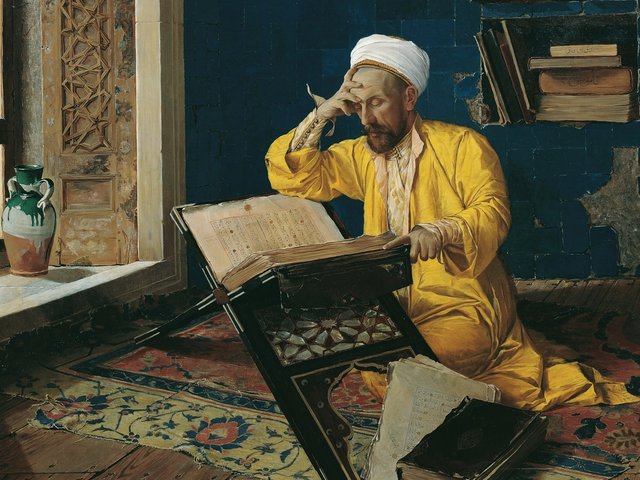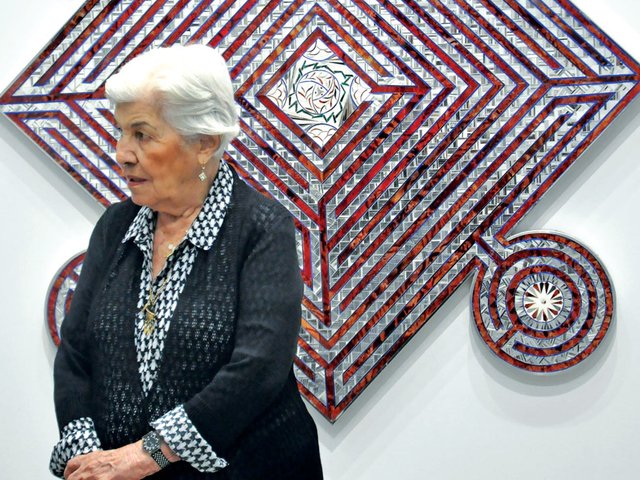It is nearly 65 years since Arthur Upham Pope’s majesterial "Survey of Persian Art" was published by Oxford University Press. Inspired by the great exhibition of Persian art held at Burlington House in 1931, its three large volumes of text and three equally large volumes of black and white plates made it the first and only survey of the architecture and arts of Iran from earliest times to the Qajar period ever attempted in the 20th century and provided a landmark in the study of Iran’s cultural history.
The splendour of Iran claims to be “the first comprehensive study of Persian culture since 1935” and, although it is not physically so large, it is certainly an eye-catching set of volumes and its claim is worth considering.
Its first volume traces the development of art, architecture, numismatics and courtly pastimes from pre-history to the end of the Sasanian period; its second volume deals with the architecture and architectural decoration of the Islamic period, and also includes a section on city planning; the third focuses on the full range of Islamic period applied and decorative arts (again, including coins). together with the cultural continuum seen through science and scientific instruments, the history of medicine, popular religious art, acts of worship, ceremonies, and Nowruz; its ends with an epilogue on the shaping of Iran’s character and the history of Iran in the 20th century. Texts and photographs are mixed throughout the volumes and all the plates are in colour.
Although the Splendour looks so different from the Survey because of its full colour approach, there is a more fundamental difference in its plates. The Survey often relied on Western collections for its illustrations of the minor arts, especially those of the Islamic period—though there were exceptions, including, for example, some manuscripts from the Gulistan Palace Library. The Splendour, however, draws primarily on pubic and private collections in Iran itself, the former including the National Museum, the Riza-i Abbasi Museum, the Gulistan Palace Museum, the Glass and Ceramics Museum, the Museum of Contemporary Arts, the National Jewellery Treasury and the Money Museum in Tehran, as well as the Pars Museum in Shiraz and the Majlis and Tehran University Libraries. In doing so it inevitably brings to light many interesting objects which have never before been illustrated. This makes the volumes important sources of new material for scholars.
Where the Survey and the Splendour differ most radically, however, is in the nature of the texts. Those in the Survey were intended to provide a thorough survey of what was known of Iran’s arts and architecture in the 1930s. Their quality varied but they were all substantial pieces of writing and research. They included large number so high quality drawings, and, in the case of the architectural chapters, many valuable ground plans. They also included footnotes and bibliographical details. In other words, they were attempting to provide a full, scholarly platform for future research.
Those of the Splendour, on the other hand, are quite different in objective: they are there to summarise what is known and to encapsulate past scholarship in as concise a way as possible within the limited space available. Thus, the section on Achaemenid art only runs to 14 pages, while that on Islamic ceramics is a mere six. Good as such texts may be for summarising knowledge, they are not such good platforms for future scholarship and the only way a reader can immediately extend his or her knowledge beyond such brevity is to refer to the “Further reading” at the end of volume three, which, being but one page long, offers only limited possibilities.
That said, however, there are sections in these volumes which are of primary importance. An example is Dr Golmohammadi’s on woodwork of the Islamic period. Dr Golmohammadi is an authority on medieval Iranian woodwork whose PhD thesis has sadly never been published and his Splendour text is an important summary of his knowledge. It is also illustrated with immediately accessible pictures of the wooden mihrab (1084) and minbar (1073) of the mosque at Abyaneh, the latter being particularly good, and pictures of the minbar from the Friday Mosque at Suryan in Fars (1369), which is now in the National Museum in Tehran.
What is really exciting about these volumes, however, is the nationality of its authors. The Survey was essentially the work of Western scholars, but, with few exceptions, the texts in the Splendour’s three volumes are by Iranian scholars. That is a huge step forward and it reflects the large number of publications which have been written by Iranian academics and published in Iran since the Revolution, providing histories of cities or of individual sites and buildings, surveys of architectural building forms, or of architectural decoration, or illustrated catalogues of objects in Iranian museums.
Archaeologically, architecturally and art-historically, Iran is very much on the move. The splendour of Iran is therefore a landmark, not so much in its claim to comparison with the Survey of Persian art, but in the way it provides exciting evidence of the growing body of Iranian scholars studying and bringing to the world’s attention the great wealth of Iran’s
Originally appeared in The Art Newspaper as ‘Iranian scholars on the move'




